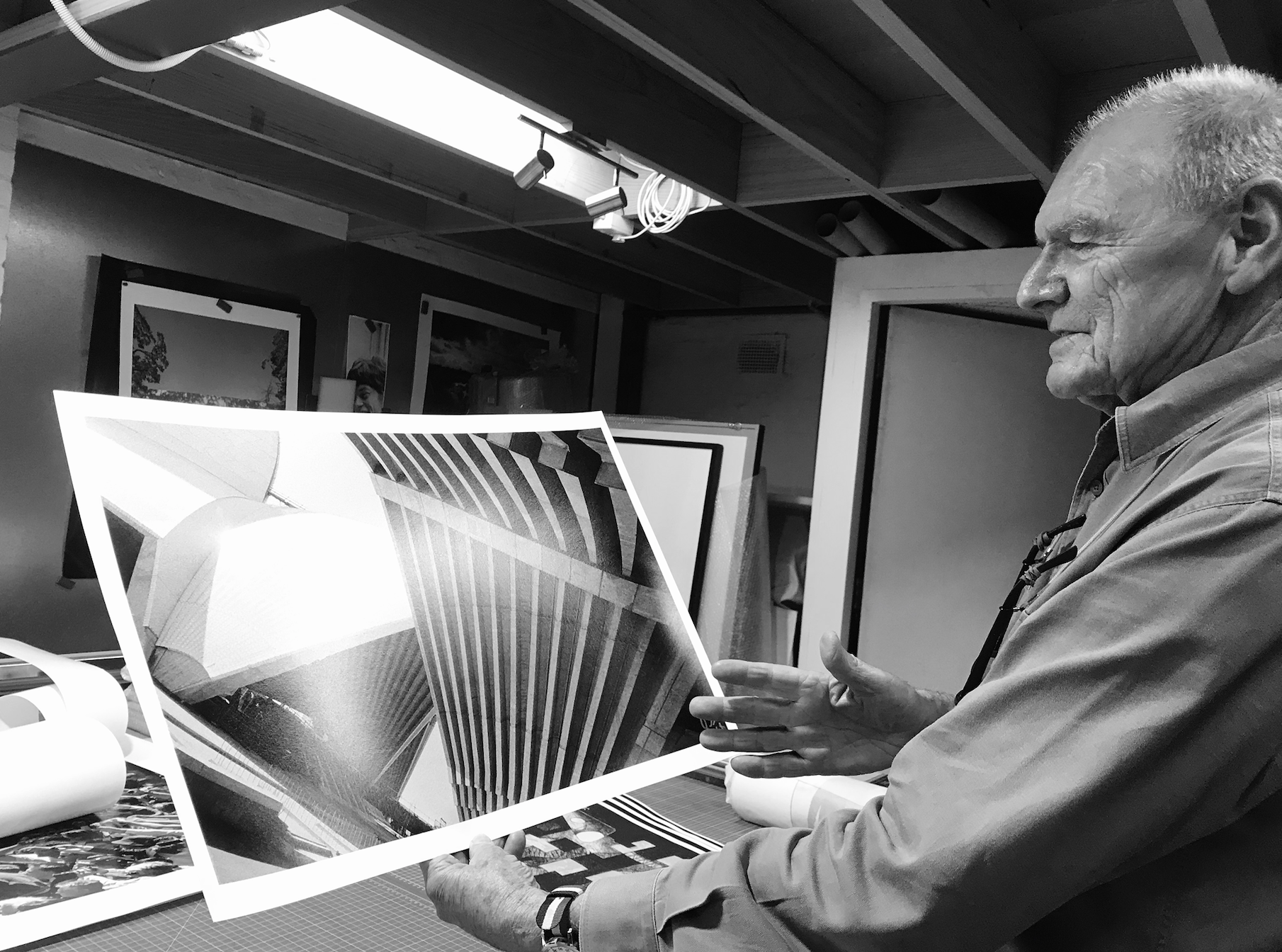-

John Gollings
16th December, 2020.
John Gollings has established a photographic legacy spanning four decades that has influenced the depiction of architecture in Australia and beyond. His work navigates a complexity of era’s, bearings, context and content, technology and platforms and continues to fundamentally inform the next generation of photographers.
Open Journal | Do you feel a sense of responsiblity for your photographic portrayal of architecture?
John Gollings | I do. I know my position can be contentious but I have objectives in every shoot which I try to meet. I try to take the least number of images to describe a project, ideally the single perfect exterior and interior. I want to best describe the actual geometry of the project so artful closeups are not my vocabulary. I want the image to be memorable through composition, lighting and content. I try to express scale through the use of people occupying the space and activating it.

Sturges House by Frank Lloyd Wright
Open Journal | Does your depiction of architecture aim to capture the realities or ‘best sides’ of buildings? Has this intent changed with the development of equipment and post-production technology?
John Gollings | I don’t particularly think of best sides or reality. I aim to convey the architects design intent which is more likely a theory whith architectural motifs which I need to understand and draw out. I tend to work with backlight which simplifies the palette and allows a view to internals and I assenble images from bracketed exposure and different combinations of blurred people which I build into a single image. I then control how the eye wanders across a frame and I dodge and burn the image to contain the eye. Digital capture makes this much easier and quicker and I have no compunction removing extraneous elements like chimneys and exit signs if they are disctracting and irrelevant to the broader design intent.

Gluckman Pace Gallery Beijing
Open Journal | Is there ever a disconnect between how you see and experience a space as opposed to how that then photographs?
John Gollings | A massive disconnect. Firstly, because a three dimensional object is to be rendered in 2D with a frame around it. And then because it is a subjective interpretation. If a photographer only worked with a standard lens with the same perspective as the human eye, and worked in broad daylight then you would have a semblance of the real experience. I work against the light with wide angles at dawn and dusk or soft overcast light and lots of post-production to realise as image that engages the eye without distraction. I want context but not to overwhelm the building so the balance in the composition is important and I control it with strict proportional systems based on centrality and the platonic solids.

Klein Bottle House by McBride Charles Ryan
Open Journal | Your book, Beautiful Ugly, begins with a foreword which talks of the resonance of Julius Shulman’s Case Study House #22. How the photography made architecture sexy and dramatic. Have you worked on a project with you consider equally resonant? Why?
John Gollings | I think that my whole approach is precisely that – to make sexy and dramatic images of every building I shoot. Assuming there is some merit in the building, I try to understand and amplify that quality and choose light which allows the viewer to clearly see the form and materials. It’s a symbiotic existence between photographer and architect, I need good design. My photo’s aren’t pretty. At best they are strong and memorable for their content and strength of composition. A lot of MCR (McBride Charles Ryan) work would qualify, like Klein Bottle House. Or Renzo Piano’s Tijabou Cultural Centre in Noumea.

Tijabou Cultural Centre, Noumea by Renzo Piano
Open Journal | What are some of the fundamental shifts you have witnessed in both photography and architecture throughout your years in practise?
John Gollings | For both professions, it has to be the advent of computers. The shift to digital capture was profound for speed, economy and creativity but was paralleled by CAD and 3D rendering which merged the two into a virtual world which is beginning to explode with progress. The built form is becoming obsolete!

Cloud House by MCR
Open Journal | Something that really jumped out about your work is that each image presents very independently. There is an almost experimental element where you seem to be led by form, materiality, context, weather, time etc. to determine the aesthetic outcome. Is this intentional, happenstance, or a bit of both?
John Gollings | It’s generally intentional but unforeseen circumstances lead to creative leaps. Exploring exposure and focus, blur, action and light sometimes leads to breakthroughs. Sometimes it is the restricted access that leads to new solutions or a crazy leap of imagination comes up with a new solution. I respond to a challenging environment – be it time, weather, budget, site issues, or personality. The difficulties make for lateral thinking which leads to exaggeration of the problem as a solution.

Liebeskind Media School City Uni Hong Kong
Open Journal | Finally, of the photographers dominating the architectural landscape today, who intrigues you and why?
John Gollings | Probably Iwan Baan out of Holland. I think our work and composition are very similar so I look for differences. Iwan does a more honest, straight documentation of buildings, generally hand held and captured in a single frame. He does very little post-production whereas I assemble every image from multiple frames of exposure and dynamic content like people and changing light. We both use 35mm cameras with a range of lenses to capture the geometry of a project. Neither of us do close-up compositions. We both respond to the prevailing weather and try to make it work for us. Commercially, we have to keep moving but we have to turn in a usable set of images that the client couldn’t have made themselves.